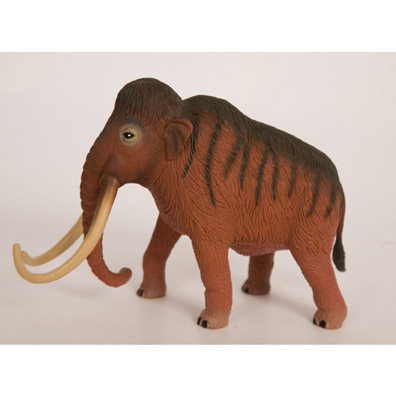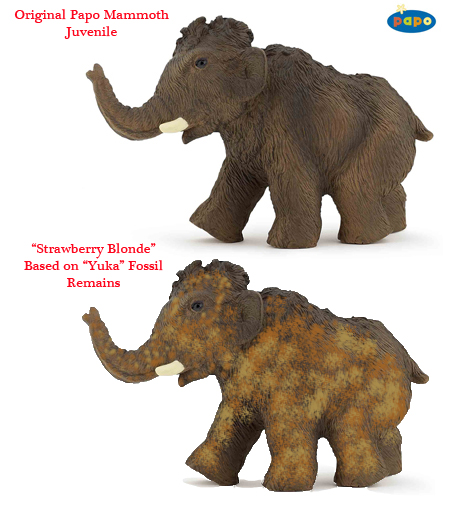Woolly Mammoth Colour Variations Exploring the Science
Research into Woolly Mammoth Genome Provides Understanding of Hair Colour
For many years, scientists believed that Woolly Mammoths were brown in colour but recent studies using frozen Woolly Mammoth remains discovered in Siberia has provided a better understanding of the colour variations of these Ice Age creatures. Thanks to the discovery of some beautifully preserved specimens many of them babies or juveniles (Dima, Lyuba and Yuka for example), palaeontologists have a much better idea of the genome of these prehistoric mammals.
Woolly Mammoth Colour Variations
It is from this better understanding of the DNA of Woolly Mammoths (M. primigenius), that scientists have begun to piece together evidence to suggest that Mammoths could have almost the same hair colouration variances as modern humans, with ginger, brunettes and even a potential blonde Mammoth.
The coat of Woolly Mammoths was adapted to the harsh climate of the northern Steppe. It consisted of two distinct layers. The first layer was composed of long, coarse guard hairs, six times thicker than human hair. This coat grew to almost a metre long in adult animals. This coat served to trap air helping to keep the animal warm and also effectively to waterproof and snowproof the animal in a similar way to the long, shaggy coat of an extant Musk Ox.
The second, inner layer which made up the undercoat had hairs that were much thinner, shorter and softer. This coat would have trapped air too, helping to insulate the animal from the cold. Columbian Mammoths (Mammuthus columbi), which lived in North America; were less hairy than their Siberian cousins. It is possible that Mammoths moulted in the spring, producing a lighter summer coat.
The Coat of a Woolly Mammoth
The colour of the hairy coat of a Woolly Mammoth, according the genome research could vary. There were indeed brown Woolly Mammoths, but also those which were a reddish/orange in colour. Some Mammoths were also a strawberry blonde hue. It seems that if you were to travel back in time to Siberia 25,000 years ago and observed several family groups of Woolly Mammoths you would probably have seen a surprising amount of coat colour variation.
Ironically, a number of cave paintings show Woolly Mammoths. These creatures were obviously very important to our ancestors as sources of meat, hide and ivory for tools. These large herbivores would have been a formidable opponent for human hunters armed with nothing more than sharpened stakes and stone tipped spears. The cave paintings depict Mammoths in a variety of colours, more than 350 caves with paintings have been discovered in Europe alone. Some of these cave have paintings of Mammoths on their walls. It was thought that the cave artists using natural pigments such as ochre, haematite and charcoal, showed the Mammoths in a variety of colours for perhaps symbolic affect or to portray deeper meaning. However, a 21st Century understanding of the Mammoth genome demonstrates that Woolly Mammoths did come in a variety a colours.
A Reddish/Brown Woolly Mammoth Model
Picture credit: Everything Dinosaur
For model makers, there is a tendency to produce Woolly Mammoth models and other Ice Age toys that are brown in colour. The Natural History Museum produced a reddish/brown Mammoth some years ago, (see picture above), around the same time that Everything Dinosaur team members were working on a Woolly Rhino model (Coelodonta). However, with this increased knowledge regarding the coats of these Ice Age creatures perhaps it is merely a question of time as to when a manufacturer will break rank and produce a “strawberry blonde” Woolly Mammoth like “Yuka”.
To view Prehistoric Mammal models including Woolly Mammoths: Papo Prehistoric Mammal Models and Dinosaurs.
Strawberry Blonde Woolly Mammoths – Papo’s Next Innovation?
Picture credit: Everything Dinosaur
The recently introduced, Papo Woolly Mammoth juvenile has been given a lighter coloured coat similar to the coat found on the carcase of the recently discovered Siberian Mammoth juvenile known as “Yuka”.



